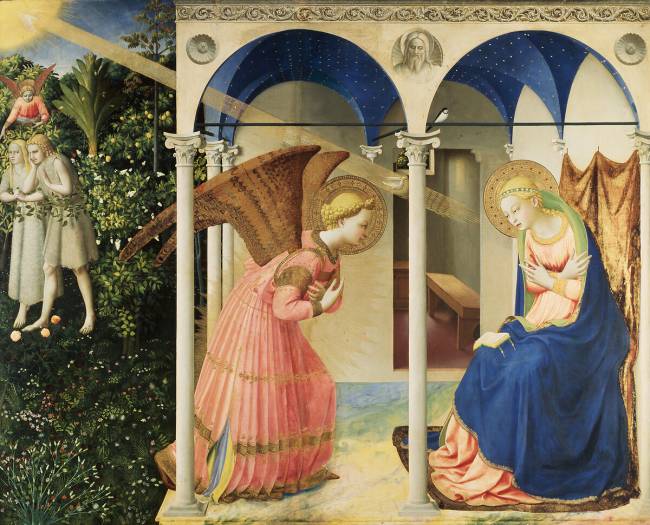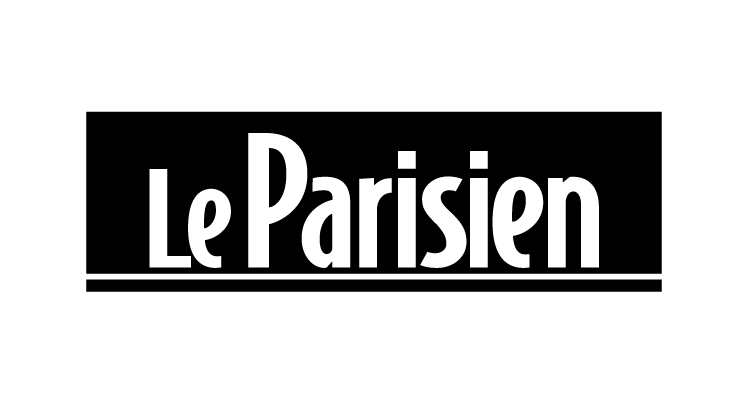Shop art print and framed art The Annunciation by Fra Angelico
Customise
Your art print
The Annunciation OF Fra Angelico
The Annunciation
Fra Angelico's Annunciation: A Renaissance masterpiece
The Annunciation is a recurring pictorial theme in the history of Western art. Among the many representations of this biblical scene, the one painted by Fra Angelico in the early 15th century occupies a special place. Now preserved at the Prado Museum in Madrid, this 162.3 cm high by 191.5 cm wide work testifies to the technical mastery and profound spirituality of this Dominican artist.
Historical background and origins of Fra Angelico's Annunciation
Fra Angelico, whose real name was Guido di Pietro, was born in Tuscany at the end of the 14th century. He joined the Dominican orders in the early 15th century and devoted himself to religious painting. Fra Angelico's Annunciation, on display at the Prado, was probably painted in 1426, for the San Domenico convent in Fiesole, near Florence. This was the beginning of the Italian Renaissance, a period marked by artistic and intellectual renewal. Florence was a major focus of this cultural effervescence, and Fra Angelico was one of the artists who contributed to the flourishing of Florentine painting. His style, imbued with serenity and grace, follows in the footsteps of "Late Gothic" painting, while incorporating the innovations of perspective and naturalism characteristic of the nascent Renaissance.
Overall visual description of The Annunciation by Fra Angelico
The work presents a simple, balanced composition. The space is divided into two distinct parts: a garden on the left, and a loggia on the right where the Annunciation scene takes place. The colors are bright and luminous, dominated by shades of blue, red and gold. Light from the left bathes the figures in a divine aura, accentuating the contours of the forms. The composition as a whole is thus marked by great harmony and an atmosphere of recollection.
The central subject: the Annunciation
In the center of the painting, the archangel Gabriel, bowing to the Virgin Mary, announces that she is to give birth to the son of God. Mary, seated on a throne, welcomes the news with humility and recollection. Both figures are depicted with great delicacy and restrained expressivity. Their gestures and gazes convey the solemnity of the moment. Above them, the Holy Spirit, in the form of a dove, accompanies the beam of divine light. This scene, taken from The Gospel according to Luke, is depicted with great fidelity to the sacred texts.
Symbolism of the elements depicted in Fra Angelico's Annunciation
Fra Angelico's Annunciation is rich in religious symbols. In the garden, symbolizing Mary's virginity, we find Adam and Eve, driven from Paradise. The colors used also have symbolic significance: blue is associated with the Virgin Mary, red with Christ's passion and gold with divinity. The light of the Holy Spirit is sent upon the figures to reinforce their divine function. Every detail of the composition contributes to accentuating the work's spiritual message.
Impact of Fra Angelico's Annunciation and its place in art history
Fra Angelico's Annunciation in the Prado is one of three paintings on this theme by the artist. These, beyond helping to bring the artist's fame to the present day, have been admired for their beauty, spirituality and technical mastery. This work, a bridge between Gothic and Renaissance art, became one of the influences of many Renaissance artists, from Sandro Botticelli to Leonardo da Vinci. Today, it is considered one of the finest representations of the Annunciation and a masterpiece of Quattrocento painting, and continues to fascinate with its grace, serenity and spiritual depth.
This artwork is a painting from the renaissance period. It belongs to the italian renaissance style.
« The Annunciation » is kept at Prado, Madrid, Spain.



































